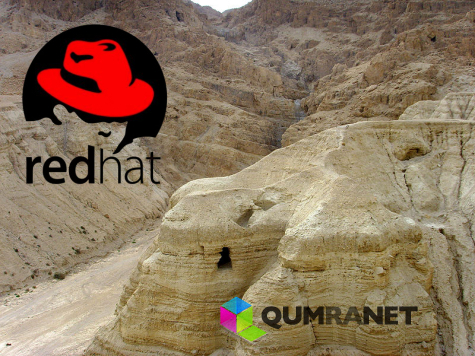Red Hat draws its line in the virtual sand with Qumranet


The caves of Qumran, located in in the highly disputed region of the West Bank that sits between Israel and Jordan and is populated by both Palestinians and Jews, is where the famous Dead Sea Scrolls were discovered. The scrolls are said by many Judaic scholars to be written by the Essenes, a rogue sect of Judaism that existed in the 1st Century AD. The Essenes rejected traditional Jewish thinking and the Temple establishment at the time and went into hiding -- perhaps in the harsh landscape of Qumran.
Click on the "Read the rest of this entry" link below for more.
Like the radical Essenes, Red Hat is also rejecting the traditional thinking of bare-metal, monolithic hypervisor design by embracing the Open Source KVM hypervisor for Linux and its $107M purchase this week of Qumranet, the Israeli company which sponsors the KVM project. Qumranet was co-founded by Moshe Bar, who was also co-founder of the Open Source Xen project whose source code and basic design philosophy forms the basis of many commercial virtualization products, including Citrix XenServer, Sun xVM Server, Orace VM, Virtual Iron, and Microsoft's Hyper-V.
KVM differs from traditional Type 1 hypervisors in that instead of "running on the metal" using a thin supervisory layer that only contains the barebones elements for process scheduling, memory management and resource allocation, it extends the Linux Kernel itself to become the hypervisor. While many in the virtualization community debate whether it is a true Type 1 hypervisor and is as inherently stable as other monolithic hypervisor solutions such as VMWare ESX or Xen, KVM is one of the fastest performing hypervisors around because it takes advantage of the virtualization features of the latest 64-bit x86 chips.
Where Qumranet comes in is adding value to the basic hypervisor by creating an optimized platform for creating and managing virtual desktops known as SolidICE -- which competes in the same space that Citrix is in with XenDesktop and VMWare is in with VDI. However, Qumranet has created a special thin client protocol known as SPICE that permits virtualized Windows remote desktops to display rich multimedia content at nearly native speeds, something its competitors cannot do. This thin client protocol and virtual desktop server comes along with all the provisioning tools necessary to make it a fully integrated and manageable solution. SPICE is currently a proprietary, closed source protocol, but one can hope that Red Hat will consider opening the source in the grand tradition that the company has done with its other unique software assets that it has contributed to the community
Along with Red Hat's OS and market leadership in the Enterprise Linux space, its acquisition of Qumranet will without a doubt shake up the industry, much as it was with JBOSS. The line in the sand is drawn -- as to whether VMWare and Citrix will now retreat into their respective caves and come up with solutions that will match SolidICE's performance and price will remain to be seen.
Is Red Hat going to be the new leader in virtual desktop deployments with Qumranet? Talk Back and let me know.